Filtered by: Lifestyle
Lifestyle
From treasure to rubble: Heritage churches before and after the Bohol quake
By KIM LUCES, GMA News
(Updated 2:56 p.m., October 20, 2013) Bastions of strength, stability and most of all longevity, the heritage churches of Bohol stood as symbols of the worldwide reach of a powerful Church for centuries.
Now they are evidence of nature's power.
On the morning of Tuesday, Oct. 15, a 7.2-magnitude earthquake hit the province, killing dozens of people across Central Visayas and leveling several buildings—including some of these churches, among the oldest in Asia.
According to Trixie Angeles, vice chairman of the National Committee on Monuments and Sites, six national cultural treasures and two important cultural properties were damaged or destroyed by the quake.
“Right now wala pa kaming assessment. All we know of the damages is based on the pictures lang. We can't say with finality the extent of that damage,” Angeles said.
A joint team of experts will inspect and evaluate the damage to the heritage sites starting Thursday, according to the Official Statement of the Board of Commissioners of the NCCA.
The title of "national cultural treasure" is the highest recognition the Philippines can bestow on cultural properties, while "important cultural property" is the second highest recognition.
Angeles identified the national cultural treasures affected as the following:
1. San Pedro Church, Loboc
According to the NCCA website, this church was built in the 17th century by the Jesuits. The Augustinian Recollects added the porticos and funeral chapel in the 19th century. It was also decorated with paintings in the 20th century. 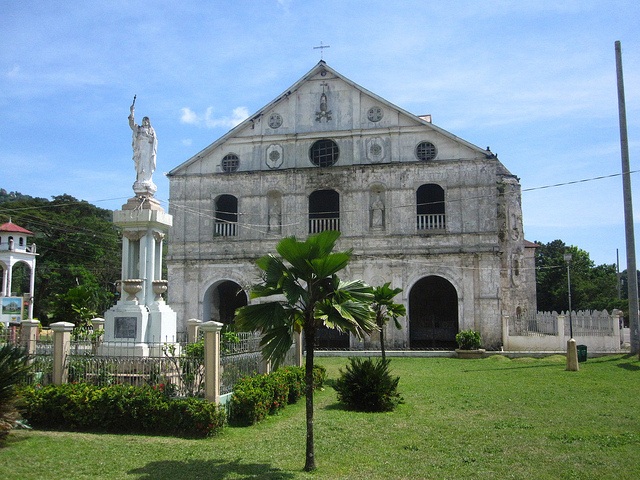
Now they are evidence of nature's power.
On the morning of Tuesday, Oct. 15, a 7.2-magnitude earthquake hit the province, killing dozens of people across Central Visayas and leveling several buildings—including some of these churches, among the oldest in Asia.
According to Trixie Angeles, vice chairman of the National Committee on Monuments and Sites, six national cultural treasures and two important cultural properties were damaged or destroyed by the quake.
“Right now wala pa kaming assessment. All we know of the damages is based on the pictures lang. We can't say with finality the extent of that damage,” Angeles said.
A joint team of experts will inspect and evaluate the damage to the heritage sites starting Thursday, according to the Official Statement of the Board of Commissioners of the NCCA.
The title of "national cultural treasure" is the highest recognition the Philippines can bestow on cultural properties, while "important cultural property" is the second highest recognition.
Angeles identified the national cultural treasures affected as the following:
1. San Pedro Church, Loboc
According to the NCCA website, this church was built in the 17th century by the Jesuits. The Augustinian Recollects added the porticos and funeral chapel in the 19th century. It was also decorated with paintings in the 20th century.

San Pedro Church in Loboc before the earthquake. Ederic Eder
The earthquake brought down parts of the ceiling and walls of Bohol's second oldest church. The facade has collapsed entirely and the bell tower (below) has been halved in height.
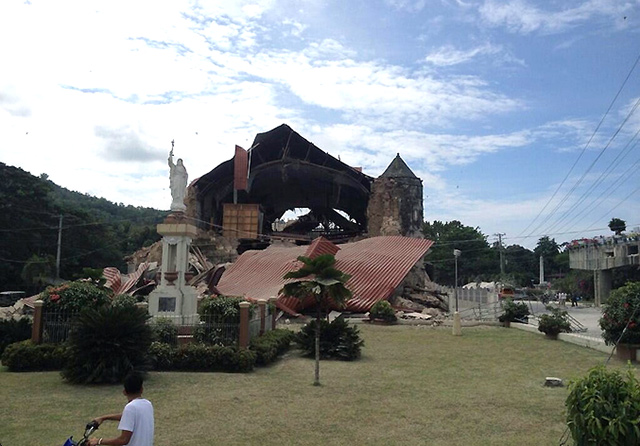
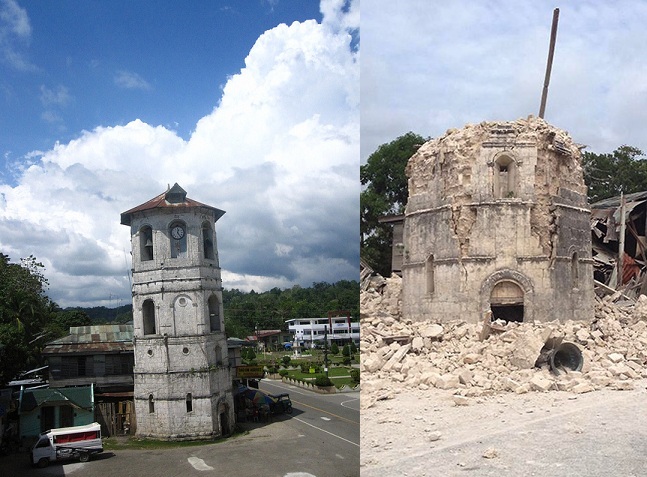

San Pedro Church Tuesday morning. Robert Michael Poole via Twitter

The kampanaryo (bell tower) before and after. Ederic Eder/Robert Michael Poole
2. Immaculada Concepcion de la Virgen Maria, Baclayon
The Jesuit-built Baclayon church is considered one of the oldest churches in the Philippines. It was built of coral stones, with the whites of countless eggs used to cement them together.
Its modern facade, though, was added in the 19th century by the Augustinian Recollects.
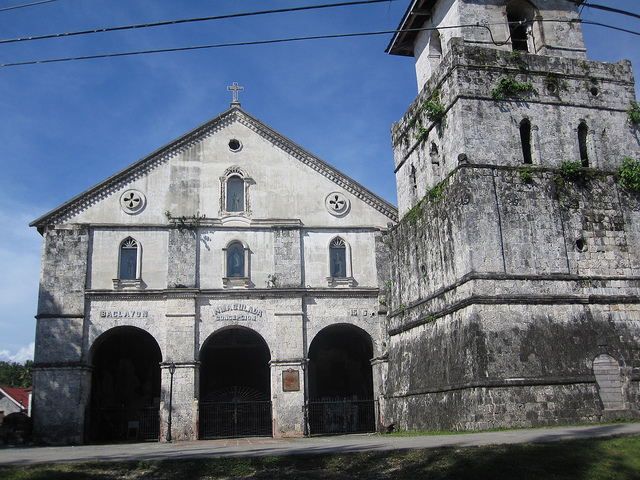
Attached to the church is a museum containing centuries-old religious and historic artifacts. The church was, for a long time, considered one of the best-preserved Jesuit churches in the region.
This coral-stone church was seen as one of the grandest and finest churches in Visayas, and was also the biggest in Bohol. The Augustinian Recollects constructed the current church in Ionic and Corinthian style, and its facade was known for its symmetry.
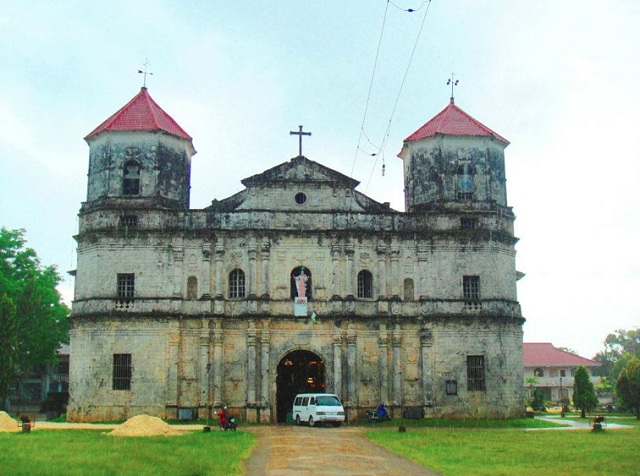
The Jesuit-built Baclayon church is considered one of the oldest churches in the Philippines. It was built of coral stones, with the whites of countless eggs used to cement them together.
Its modern facade, though, was added in the 19th century by the Augustinian Recollects.

Baclayon Church before the quake. Ederic Eder
Attached to the church is a museum containing centuries-old religious and historic artifacts. The church was, for a long time, considered one of the best-preserved Jesuit churches in the region.
3. Nuestra Señora de la Luz, Loon, BoholPHOTO: The Baclayon Church in Bohol also damaged after magnitude 7.2 quake | via YouScooper Michelle Francisco pic.twitter.com/kmywXNd5ir
— YouScoop (@YouScoop) October 15, 2013
This coral-stone church was seen as one of the grandest and finest churches in Visayas, and was also the biggest in Bohol. The Augustinian Recollects constructed the current church in Ionic and Corinthian style, and its facade was known for its symmetry.

The Church of Nuestra Señora de la Luz, Loon. Wikipedia
After the quake, Loon residents were met with the devastating sight of their old church pulverized, reduced to a pile of rubble with no structure left at all.
4. Loay, Bohol
The Loay church was established in the 19th century, built from coral stones and designed to survive extreme weather conditions.
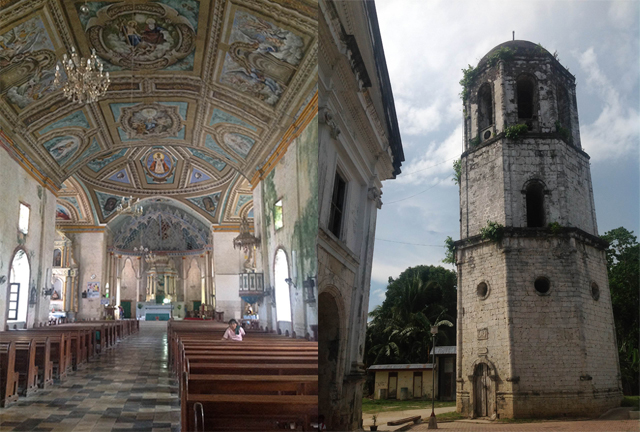
The Loay church was established in the 19th century, built from coral stones and designed to survive extreme weather conditions.

The interior (left) and the bell tower of Loay Church. Yasmin Arquiza
In a post on his Facebook account, Lorenzo Tan of the Worldwide Fund for Nature - Philippines listed the Loay Church as "damaged" by the quake.
5. Church of Our Lady of the Assumption, Dauis, Bohol
This church on the tourist-friendly island of Panglao was, according to an article on Bohol.ph, built by the Jesuits in a mix of styles.
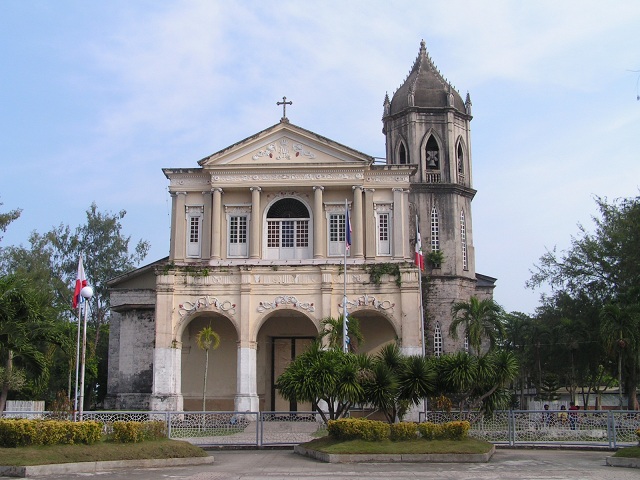
5. Church of Our Lady of the Assumption, Dauis, Bohol
This church on the tourist-friendly island of Panglao was, according to an article on Bohol.ph, built by the Jesuits in a mix of styles.

Dauis Church, Dauis, Panglao. Wikipedia
The quake damaged the church's walls and roof.
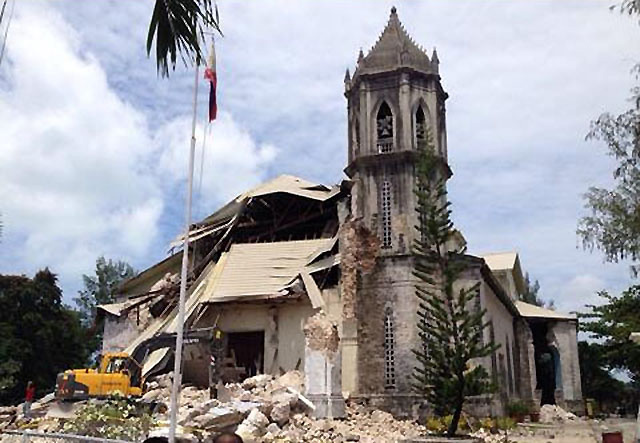

Dauis Church was badly damaged by the quake. Michelle Francisco via YouScoop
6. Parroquia de la Santa Cruz, Maribojoc, Bohol
The Maribojoc church was also built in the 19th century by the Jesuit order.
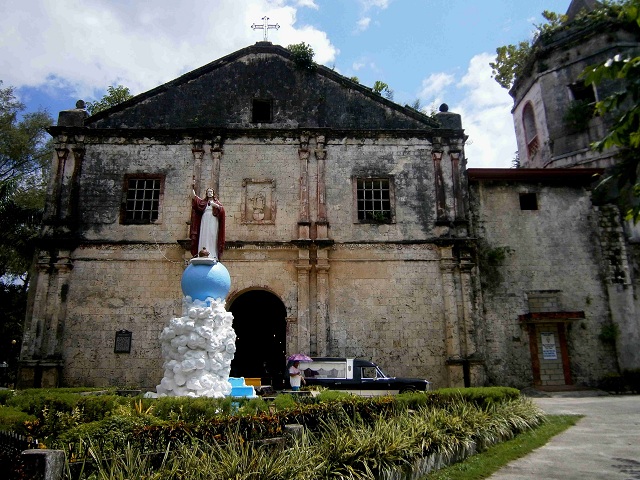
The Maribojoc church was also built in the 19th century by the Jesuit order.

Parroquia de la Santa Cruz, Maribojoc. Roli Talampas
It was listed as "damaged" by WWF Philippines' Tan on his Facebook page.
But a visit by Task Force Heritage and Project Kisame to the site showed utter destruction.
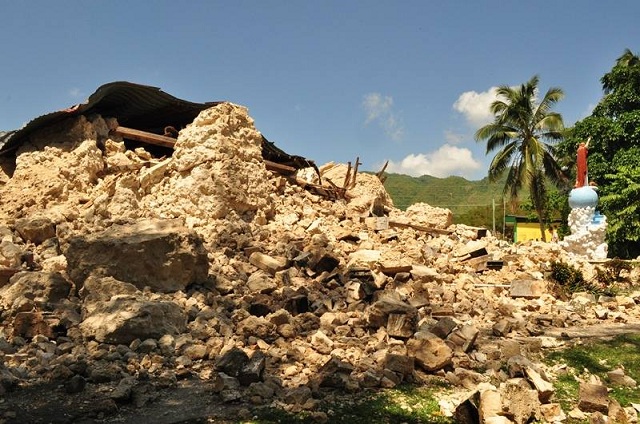
But a visit by Task Force Heritage and Project Kisame to the site showed utter destruction.

After the quake. Project Kisame/Joel Aldor
Important cultural properties
The two important cultural properties that sustained damage are the Kapitolyo in Tagbilaran and Albur Parish, the 19th century parish church of Santa Monica in Albuquerque.
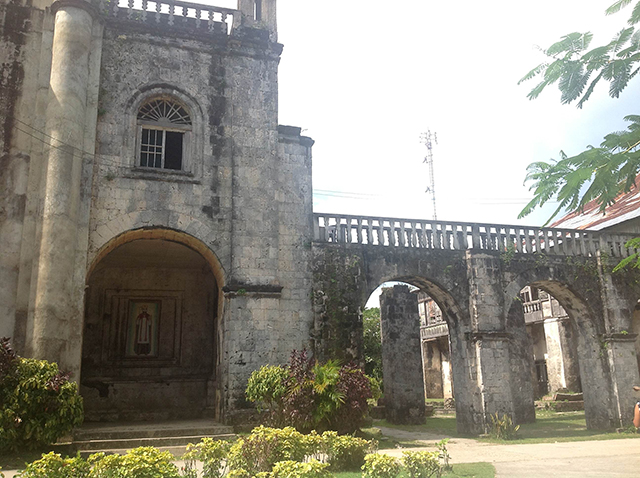
The two important cultural properties that sustained damage are the Kapitolyo in Tagbilaran and Albur Parish, the 19th century parish church of Santa Monica in Albuquerque.

Albur Parish in Albuquerque before the quake. Yasmin Arquiza
Begin again
In a 24 Oras report, NCCA subcommission on cultural heritage head Regalado Jose lamented the damages, noting that churches are artifacts of memory.
"'Dun tayo nagdarasal, 'dun natin inililibing ang mga ninuno natin. 'Dun binibinyagan ang mga angkan natin... Halos lahat ng buhay natin, ay naaalala sa simbahan," Jose said.
Meanwhile, National Historical Commission chief Maria Serena Diokno said churches form "part of the soul of the community."
National Museum director Jeremy Barns noted that they would assess the possibility of rehabilitating the damaged churches.
"We'll have to assess whether it is possible, whether it is feasible, in a way that is acceptable to all the stakeholders," he said.
Fr. Milan Ted Torralba, executive director of the Permanent Committee for the Cultural Heritage of the Church under the Catholic Bishops' Conference of the Philippines, said makeshift churches would have to be put up.
"What can we do?," he said. "We can always begin from ground zero, and from there we can start to rebuild." — with reports by Marc Jayson Cayabyab and Rouchelle R. Dinglasan/BM/HS, GMA News
In a 24 Oras report, NCCA subcommission on cultural heritage head Regalado Jose lamented the damages, noting that churches are artifacts of memory.
"'Dun tayo nagdarasal, 'dun natin inililibing ang mga ninuno natin. 'Dun binibinyagan ang mga angkan natin... Halos lahat ng buhay natin, ay naaalala sa simbahan," Jose said.
Meanwhile, National Historical Commission chief Maria Serena Diokno said churches form "part of the soul of the community."
National Museum director Jeremy Barns noted that they would assess the possibility of rehabilitating the damaged churches.
"We'll have to assess whether it is possible, whether it is feasible, in a way that is acceptable to all the stakeholders," he said.
Fr. Milan Ted Torralba, executive director of the Permanent Committee for the Cultural Heritage of the Church under the Catholic Bishops' Conference of the Philippines, said makeshift churches would have to be put up.
"What can we do?," he said. "We can always begin from ground zero, and from there we can start to rebuild." — with reports by Marc Jayson Cayabyab and Rouchelle R. Dinglasan/BM/HS, GMA News
More Videos
Most Popular




